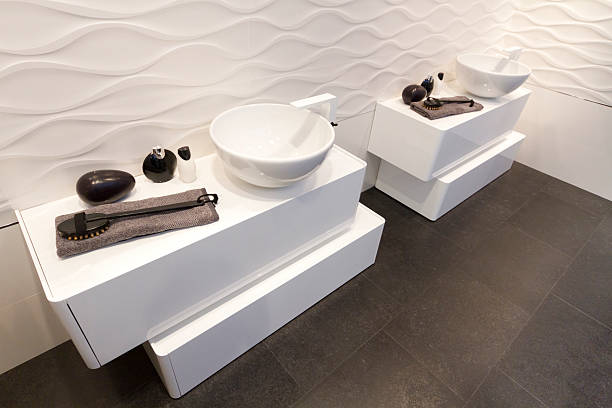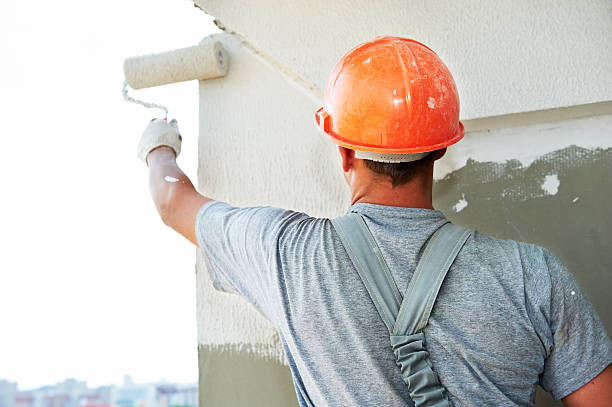Bathroom floor tiles serve as the foundation of your bathroom’s aesthetic and functionality, contributing to both style and practicality. The right choice of tiles can elevate the ambiance, enhance the visual appeal, and create a durable surface that withstands the unique challenges of a bathroom environment. In this comprehensive guide, we explore various aspects of bathroom floor tiles, from materials and styles to installation tips, offering insights into how you can create a stunning and resilient bathroom floor.
Choosing the Right Material:
a. Ceramic Tiles: Ceramic tiles are a popular choice for bathroom floors due to their affordability, versatility, and easy maintenance. Available in an array of colors, patterns, and sizes, ceramic tiles offer endless design possibilities, making them suitable for various bathroom styles.
b. Porcelain Tiles: Renowned for their durability and resistance to water, porcelain tiles are an excellent option for bathroom floors. They are less porous than ceramic tiles, making them highly resistant to water absorption, stains, and wear. Porcelain tiles come in diverse finishes, including matte and polished, offering both aesthetic appeal and practical benefits.
c. Natural Stone Tiles: Elevate your bathroom with the timeless beauty of natural stone tiles, such as marble, granite, or travertine. While these tiles exude luxury and sophistication, they require more maintenance than ceramic or porcelain tiles. Proper sealing is essential to protect natural stone tiles from water damage and stains.
d. Vinyl Tiles: Vinyl tiles are a budget-friendly and water-resistant option for bathroom floors. They come in a variety of styles, including designs that mimic the look of natural materials like wood or stone. Vinyl tiles are comfortable underfoot, making them a practical choice for bathrooms.
e. Cement Tiles: Embrace a trendy and artisanal look with cement tiles that offer intricate patterns and vibrant colors. Cement tiles are durable and visually striking, making them a favorite for those seeking a unique and customized bathroom floor.
Styles and Patterns:
a. Classic and Timeless: Opt for classic and timeless styles such as subway tiles or hexagonal patterns. These designs withstand changing trends and create a clean, elegant, and enduring look in your bathroom.
b. Geometric Designs: Introduce a modern and dynamic vibe with geometric patterns. Chevron, herringbone, or Moroccan-inspired designs add a contemporary touch to your bathroom floor, creating visual interest and depth.
c. Wood-Look Tiles: Capture the warmth of wood without the concerns of moisture damage by choosing wood-look tiles. These tiles come in a variety of finishes and colors, offering a natural aesthetic while providing the durability and water resistance needed in a bathroom.
d. Mosaic Tiles: Mosaic tiles allow for intricate and artistic designs. Use them to create accent areas, borders, or feature walls within your bathroom. Mosaic tiles come in various materials, including glass, ceramic, and natural stone, providing versatility in design.
e. Large Format Tiles: Embrace the trend of large format tiles for a sleek and contemporary appearance. Large tiles create the illusion of a more spacious bathroom and reduce grout lines, resulting in a seamless and modern aesthetic.
Practical Considerations:
a. Slip Resistance: Prioritize slip resistance, especially in a bathroom where water spillage is common. Look for tiles with textured surfaces or finishes that provide traction underfoot, reducing the risk of slips and falls.
b. Water Resistance and Sealing: Ensure that your chosen tiles are water-resistant and suitable for wet environments. Proper sealing, particularly for natural stone tiles, is crucial to prevent water infiltration and maintain the longevity of the bathroom floor.
c. Ease of Maintenance: Consider the level of maintenance required for the tiles. Smooth and glazed tiles are easier to clean and maintain than textured or porous surfaces. Choose tiles that align with your lifestyle and the amount of time you can dedicate to maintenance.
d. Underfloor Heating Compatibility: If you desire a cozy bathroom experience, check if the selected tiles are compatible with underfloor heating systems. Certain materials, such as porcelain, conduct and retain heat effectively, making them ideal for creating a warm and comfortable bathroom floor.
Color Palette and Lighting:
a. Light Colors for Small Spaces: In smaller bathrooms, opt for lighter-colored tiles to create an illusion of space and brightness. Light hues reflect natural and artificial light, contributing to a more open and airy atmosphere.
b. Contrasting Accents: Introduce visual interest by incorporating contrasting accents or patterns. A strategically placed mosaic or patterned section can become a focal point, adding personality to the bathroom floor without overwhelming the space.
c. Natural Tones for Tranquility: For a spa-like ambiance, consider natural tones inspired by earthy colors. Beige, soft greens, or muted blues create a tranquil and calming environment, enhancing the overall sense of relaxation in your bathroom.
d. Consider Lighting Conditions: Evaluate the lighting conditions in your bathroom, including natural light and artificial fixtures. Choose tile colors that harmonize with the overall lighting scheme to achieve a cohesive and well-balanced look.
Installation Tips:
a. Professional Installation: While some homeowners opt for DIY tile installation, hiring a professional ensures precise measurements, proper sealing, and a flawless finish. Professional installers can navigate potential challenges, such as irregularities in the subfloor or plumbing fixtures.
b. Grout Selection: Pay attention to grout selection, as it can significantly impact the final appearance of your bathroom floor. Choose a grout color that complements the tiles and consider epoxy grout for improved durability and stain resistance.
c. Layout Planning: Plan the layout of the tiles before installation to achieve a balanced and symmetrical look. Consider the placement of focal points, such as a vanity or bathtub, and ensure that tile cuts are minimal and inconspicuous.
d. Tile Spacing: Use tile spacers during installation to maintain consistent gaps between tiles. Adequate spacing allows for grout application and accommodates the natural expansion and contraction of materials due to temperature and humidity changes.
Conclusion:
Bathroom floor tiles are not only a practical element but a crucial design feature that sets the tone for your bathroom’s style and functionality. From choosing the right material and style to considering practical aspects like slip resistance and maintenance, every decision contributes to the overall success of your bathroom floor. By paying attention to these details and incorporating your personal style preferences, you can create a stunning and enduring foundation that complements the overall design of your bathroom, turning it into a welcoming and visually pleasing sanctuary



